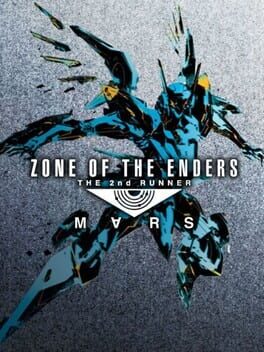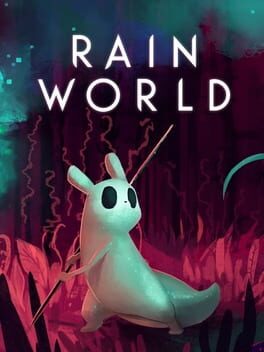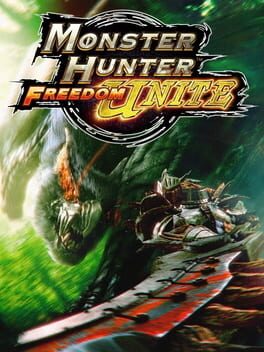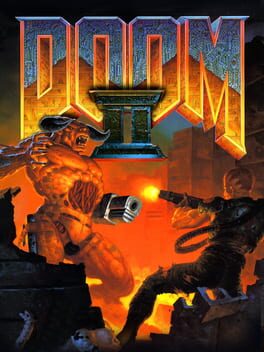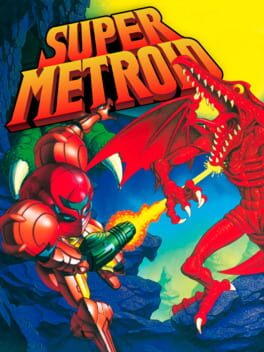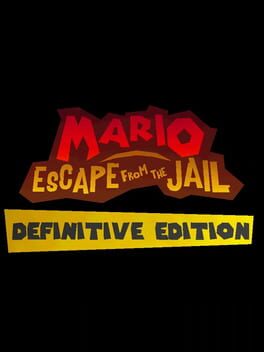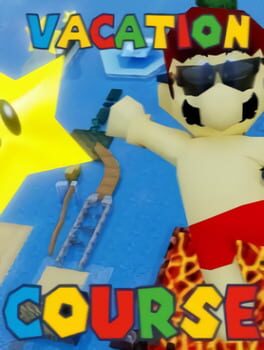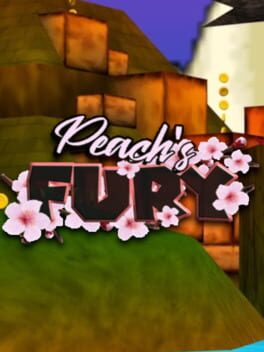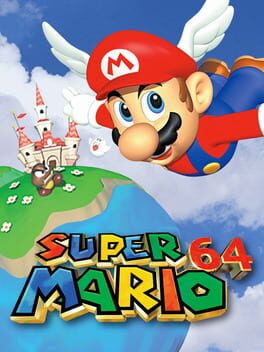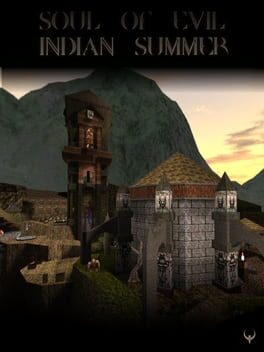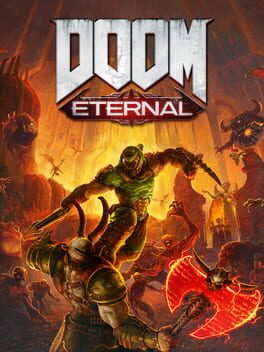HotPocketHPE
Bio
My ratings here skew high, since I try to avoid games I think will be bad, and I haven't bothered to rate a lot of games I've played over the years. VNs/VN-adjacents unscored.
1/5 - Minimal value OR destructive to the medium
3/5 - Inoffensive and pleasant OR major strengths contested by critical flaws
5/5 - Relentlessly polished, minimal flaws OR peerless and groundbreaking in some aspect
My ratings here skew high, since I try to avoid games I think will be bad, and I haven't bothered to rate a lot of games I've played over the years. VNs/VN-adjacents unscored.
1/5 - Minimal value OR destructive to the medium
3/5 - Inoffensive and pleasant OR major strengths contested by critical flaws
5/5 - Relentlessly polished, minimal flaws OR peerless and groundbreaking in some aspect
Badges

GOTY '23
Participated in the 2023 Game of the Year Event

N00b
Played 100+ games

Adored
Gained 300+ total review likes

Pinged
Mentioned by another user

Gone Gold
Received 5+ likes on a review while featured on the front page

Trend Setter
Gained 50+ followers

Loved
Gained 100+ total review likes

Roadtrip
Voted for at least 3 features on the roadmap

2 Years of Service
Being part of the Backloggd community for 2 years

Donor
Liked 50+ reviews / lists

Popular
Gained 15+ followers

Liked
Gained 10+ total review likes

Well Written
Gained 10+ likes on a single review

Best Friends
Become mutual friends with at least 3 others

Noticed
Gained 3+ followers

Busy Day
Journaled 5+ games in a single day
Favorite Games
136
Total Games Played
011
Played in 2024
000
Games Backloggd
Recently Played See More
Recently Reviewed See More
An experienced dev team's first foray into true 3D that, shockingly, gets it right all the way back in June 1996.
Absolutely rock-solid fundamentals which set the tone for the rest of the genre. Analog controls enable precise adjustment of angles which have huge downstream effects. A signature focus on momentum, combined with tricks both intentional and unintentional, birthed one of the most legendary and iconic speedrunning scenes of all time. Systems like this in a casual single player context, balanced to enhance rather than subvert challenges, are rare to find, and even the devs themselves never quite managed to recapture this particular flavor.
The level design here is emblematic of the early 3D era "golden age": enough detail and representation to evoke sense of place, but with the abstraction necessitated by the time's technology both facilitating dense layouts and imbuing the atmosphere with a surreal, dreamlike quality. No established formulas for success existed yet, so levels aren't overly concerned with providing the player a frictionless experience. Each expresses their own quirky character, something felt even more strongly than usual since gameplay is so contextualized by the precise placement of nearby geometry.
Shortcomings mainly occur in obtuse progression/secrets and a handful of stages (more concentrated in the latter half) that don't play to the game's strengths. Luckily, the huge modding scene has leveraged this fantastic foundation and learned from these mistakes to create a veritable cornucopia of visions, both vanilla-like and experimental, for you as a player to explore.
Yup, Quake is a pretty great game!
Absolutely rock-solid fundamentals which set the tone for the rest of the genre. Analog controls enable precise adjustment of angles which have huge downstream effects. A signature focus on momentum, combined with tricks both intentional and unintentional, birthed one of the most legendary and iconic speedrunning scenes of all time. Systems like this in a casual single player context, balanced to enhance rather than subvert challenges, are rare to find, and even the devs themselves never quite managed to recapture this particular flavor.
The level design here is emblematic of the early 3D era "golden age": enough detail and representation to evoke sense of place, but with the abstraction necessitated by the time's technology both facilitating dense layouts and imbuing the atmosphere with a surreal, dreamlike quality. No established formulas for success existed yet, so levels aren't overly concerned with providing the player a frictionless experience. Each expresses their own quirky character, something felt even more strongly than usual since gameplay is so contextualized by the precise placement of nearby geometry.
Shortcomings mainly occur in obtuse progression/secrets and a handful of stages (more concentrated in the latter half) that don't play to the game's strengths. Luckily, the huge modding scene has leveraged this fantastic foundation and learned from these mistakes to create a veritable cornucopia of visions, both vanilla-like and experimental, for you as a player to explore.
Yup, Quake is a pretty great game!
Mmmmm, tasty slaughter. Pack of Doom style slaughtermaps (minus the first two maps, which were obviously not made by Tronyn) with custom weapons, powerups, and enemies. Favs: Chain Thunderbolt and Amulet of Reflection. Shotgun starts too which I love!
Enemies are generally well-considered, mostly low health medium damage stuff that rounds out the roster for high enemy count mapping. Not a huge fan of the dragons though. Their AI tries to dodge projectiles which can be cool to play around using hitscan weapons or the environment, but gets finicky when they fly away and snipe with their high damage output.
Worth checking out just for map 3, that one is amazing.
Enemies are generally well-considered, mostly low health medium damage stuff that rounds out the roster for high enemy count mapping. Not a huge fan of the dragons though. Their AI tries to dodge projectiles which can be cool to play around using hitscan weapons or the environment, but gets finicky when they fly away and snipe with their high damage output.
Worth checking out just for map 3, that one is amazing.
(Played on Nightmare, mods used: Original TAG1, AI Restoration, Fixed Immora)
Doom Eternal feels like it should be the greatest single-player FPS ever for me, and I really admire its ideas and ambitions, but instead it's just a pretty good game. Why?
My main problem is that most of the encounters have a "soupy consistency": they feel similar despite me ostensibly making different decisions in the moment. I am still not sure what precisely is causing this, but I think most of the complaints about this game aren't getting at the core issues, so I'm just gonna throw out a bunch of things that I think are primarily contributing.
Movement in Doom Eternal is just ridiculous. For comparison: Quake allows for building momentum and doing crazy jumps, but this is very geometry dependent and difficult to execute while in combat. Doom's movement is more straightforwardly fast, but enemies have large hitboxes which easily bodyblock you, and the vertical axis is off-limits. Halo (and many other FPS) simply have slow movespeed that forces you to commit to positioning. DE has fast immediate movement + easy height and momentum boosting with meathook and ballista + 2 dash charges that cancel momentum and can go any direction. Faced with this kit, enemies have an extremely difficult time contesting you, especially in the air, and it's more likely that you'll get clipped by some random projectile than from misjudging a situation per se.
The level design is exacerbating this problem! Almost all the arenas you fight in are huge spaces filled with monkey bars/jump pads/ledges/etc which allow you to easily run in big circles, flee when threatened, and glide over enemies' heads. Cooldowns incentivize this too! TAG1 and the Master Levels try to combat this somewhat by using more environmental hazards, shrinking arena sizes, and placing major encounters in the comparatively cramped areas between arenas.
In the former context, the enemy roster generally struggles to pressure you. This is a real shame, because in many basic ways they are quite well-designed and differentiated (some writeups here, here). The Marauder has strong (and annoying) defense that demands you hold specific spacing, but even then it's not all that hard to just run away and ignore him. Most everyone else will let you flit around whatever range you want to be at and fire away, as opposed to the melee-oriented action games that Doom Eternal is drawing on, which require spacing and attack commitment.
There are a few exceptions. Carcasses subvert the issue by hiding and spawning energy shields at a distance which can abruptly block your path, i.e. actually contest your offense. Blood Makyrs reuse the annoying traffic light mechanic to prevent you from bursting them, but shoot massive, fast, movespeed-reducing projectiles that are dangerous and predictable enough to warrant playing proactively around. Cyber-Mancubi at least incentivize closing into melee range, where they can easily deal damage to you (unless you use the very silly chaingun shield).
The Spirit, in fittingly maximalist fashion, brute-forces the issue by just cranking up the health and speed of possessed enemies. Suddenly ranged enemies are difficult to dodge without cover, and melee enemies become relentless harassers that can actually keep up with you. On top of that, you need to make sure that you have ammo + time + space to kill the ghost itself, or let it possess something else. I wouldn't say it totally fixes the aforementioned problems, but it helps.
I say this about almost all fast FPS but this game really needed an enemy similar to Doom 2's Archvile or Quake's Shambler, something that can control space without the player just reactively dodging. Obvious, persistent homing missiles like Doom 2's Revenant or Quake's Vore might have helped complicate movement too, and the Glory Kill iframes couild even be used to avoid these big attacks (see: Ninja Gaiden incendiary shurikens).
Watching high-level play of DE is kind of weird, because of how ridiculously powerful weapon switching is. Nonstop swapping between ballista/rocket/precision bolt/SSG dilutes their individual characteristics as tools and turns them into one giant DPS hose. Almost all enemies can be bursted down near-instantly, especially with the various swap glitches that have been discovered over time, and meathook + ballista boosting to create sightlines quickly. Most players of course won't reach this level, but even for me I could feel the echoes of this playstyle when tackling the hardest content.
This game has a weird relationship with difficulty in general. Not being able to scale intensity isn't a critical flaw IMO (arguably original RE4 is like this). But I don't generally find Doom Eternal most compelling when the fights are easy, for reasons mentioned above, and trying to make the game extremely difficult presents issues. Because enemies move and fire so erratically:
* Initial placement is generally unimportant, and cannot be used as a design lever
* Single enemies struggle to exert pressure, but if the mapper places too many enemies at once, it becomes difficult to discern order from the chaos, and generic "just keep moving" strategies will dominate
Environmental hazards and AOE spam can work, but don't always feel like they change your decisionmaking that much, and feel vaguely annoying for many people, including myself at times. Limiting access to your tools, as seen in the Classic Mode for Master Levels, certainly does, but this is rarely used so far, and certainly not to the level of e.g. Doom maps.
Sometimes though I think that everything I wrote above actually doesn't matter that much, and the real problem is some difficult to pin down game feel issue. The game feels vaguely "floaty," in a way that makes it less satisfying to move around and fight. Sadly I can't identify exactly why this is, but it really does matter, even for a game near-exclusively focused on combat depth. For example, even after putting thousands of hours into Monster Hunter, the way the classic games control still feels viscerally enjoyable to me, and hurts my experience with the new games in comparison.
I found this game very difficult to analyze, so forgive any shortcomings. Check out Durandal's writeups here and here to hopefully fill in some of the gaps. Hopefully this team's next game can somehow overcome these issues and fulfill the potential of this style of design.
Doom Eternal feels like it should be the greatest single-player FPS ever for me, and I really admire its ideas and ambitions, but instead it's just a pretty good game. Why?
My main problem is that most of the encounters have a "soupy consistency": they feel similar despite me ostensibly making different decisions in the moment. I am still not sure what precisely is causing this, but I think most of the complaints about this game aren't getting at the core issues, so I'm just gonna throw out a bunch of things that I think are primarily contributing.
Movement in Doom Eternal is just ridiculous. For comparison: Quake allows for building momentum and doing crazy jumps, but this is very geometry dependent and difficult to execute while in combat. Doom's movement is more straightforwardly fast, but enemies have large hitboxes which easily bodyblock you, and the vertical axis is off-limits. Halo (and many other FPS) simply have slow movespeed that forces you to commit to positioning. DE has fast immediate movement + easy height and momentum boosting with meathook and ballista + 2 dash charges that cancel momentum and can go any direction. Faced with this kit, enemies have an extremely difficult time contesting you, especially in the air, and it's more likely that you'll get clipped by some random projectile than from misjudging a situation per se.
The level design is exacerbating this problem! Almost all the arenas you fight in are huge spaces filled with monkey bars/jump pads/ledges/etc which allow you to easily run in big circles, flee when threatened, and glide over enemies' heads. Cooldowns incentivize this too! TAG1 and the Master Levels try to combat this somewhat by using more environmental hazards, shrinking arena sizes, and placing major encounters in the comparatively cramped areas between arenas.
In the former context, the enemy roster generally struggles to pressure you. This is a real shame, because in many basic ways they are quite well-designed and differentiated (some writeups here, here). The Marauder has strong (and annoying) defense that demands you hold specific spacing, but even then it's not all that hard to just run away and ignore him. Most everyone else will let you flit around whatever range you want to be at and fire away, as opposed to the melee-oriented action games that Doom Eternal is drawing on, which require spacing and attack commitment.
There are a few exceptions. Carcasses subvert the issue by hiding and spawning energy shields at a distance which can abruptly block your path, i.e. actually contest your offense. Blood Makyrs reuse the annoying traffic light mechanic to prevent you from bursting them, but shoot massive, fast, movespeed-reducing projectiles that are dangerous and predictable enough to warrant playing proactively around. Cyber-Mancubi at least incentivize closing into melee range, where they can easily deal damage to you (unless you use the very silly chaingun shield).
The Spirit, in fittingly maximalist fashion, brute-forces the issue by just cranking up the health and speed of possessed enemies. Suddenly ranged enemies are difficult to dodge without cover, and melee enemies become relentless harassers that can actually keep up with you. On top of that, you need to make sure that you have ammo + time + space to kill the ghost itself, or let it possess something else. I wouldn't say it totally fixes the aforementioned problems, but it helps.
I say this about almost all fast FPS but this game really needed an enemy similar to Doom 2's Archvile or Quake's Shambler, something that can control space without the player just reactively dodging. Obvious, persistent homing missiles like Doom 2's Revenant or Quake's Vore might have helped complicate movement too, and the Glory Kill iframes couild even be used to avoid these big attacks (see: Ninja Gaiden incendiary shurikens).
Watching high-level play of DE is kind of weird, because of how ridiculously powerful weapon switching is. Nonstop swapping between ballista/rocket/precision bolt/SSG dilutes their individual characteristics as tools and turns them into one giant DPS hose. Almost all enemies can be bursted down near-instantly, especially with the various swap glitches that have been discovered over time, and meathook + ballista boosting to create sightlines quickly. Most players of course won't reach this level, but even for me I could feel the echoes of this playstyle when tackling the hardest content.
This game has a weird relationship with difficulty in general. Not being able to scale intensity isn't a critical flaw IMO (arguably original RE4 is like this). But I don't generally find Doom Eternal most compelling when the fights are easy, for reasons mentioned above, and trying to make the game extremely difficult presents issues. Because enemies move and fire so erratically:
* Initial placement is generally unimportant, and cannot be used as a design lever
* Single enemies struggle to exert pressure, but if the mapper places too many enemies at once, it becomes difficult to discern order from the chaos, and generic "just keep moving" strategies will dominate
Environmental hazards and AOE spam can work, but don't always feel like they change your decisionmaking that much, and feel vaguely annoying for many people, including myself at times. Limiting access to your tools, as seen in the Classic Mode for Master Levels, certainly does, but this is rarely used so far, and certainly not to the level of e.g. Doom maps.
Sometimes though I think that everything I wrote above actually doesn't matter that much, and the real problem is some difficult to pin down game feel issue. The game feels vaguely "floaty," in a way that makes it less satisfying to move around and fight. Sadly I can't identify exactly why this is, but it really does matter, even for a game near-exclusively focused on combat depth. For example, even after putting thousands of hours into Monster Hunter, the way the classic games control still feels viscerally enjoyable to me, and hurts my experience with the new games in comparison.
I found this game very difficult to analyze, so forgive any shortcomings. Check out Durandal's writeups here and here to hopefully fill in some of the gaps. Hopefully this team's next game can somehow overcome these issues and fulfill the potential of this style of design.
